Key Takeaways
The Top Building and Construction ETFs are listed below in order of Best ETF option.
| Rank |
ETF |
Expense Ratio |
5-Year Return |
Sector Focus |
Brief Note |
| 1 |
SPDR S&P Homebuilders ETF (XHB) |
0.35% |
174.92% |
Homebuilding & Residential Construction |
Strongest long-term performance, benefiting from housing demand and supply chain improvements. |
| 2 |
Global X U.S. Infrastructure Development ETF (PAVE) |
0.47% |
25.73% |
Infrastructure & Construction |
Broad exposure to infrastructure spending, with diversified holdings in engineering, materials, and equipment. |
| 3 |
Invesco Dynamic Building & Construction ETF (PKB) |
0.57% |
25.45% |
Construction Services & Materials |
Invests in companies with strong growth momentum, balancing cyclical risks with sector diversity. |
| 4 |
iShares U.S. Infrastructure ETF (IFRA) |
0.30% |
19.72% |
Utilities, Infrastructure Owners & Construction |
Stable option for long-term infrastructure investing, though performance is closely tied to policy shifts. |
Intro to Building and Construction ETFs
The construction industry is essential for economic growth, shaping homes, businesses, and infrastructure. Investing in construction ETFs is a smart way to benefit from the industry's success without picking individual stocks. These funds group multiple construction companies, offering diversification and reducing risk. With easy access, expert management, and exposure to key industry players, construction ETFs make investing simpler and more efficient.
Understanding Construction ETFs
Construction ETFs are exchange-traded funds that invest in companies involved in building and development. These funds pool investor money to create a diversified portfolio of construction-related stocks, reducing risk compared to investing in individual companies. Unlike mutual funds, ETFs trade on stock exchanges like regular shares, offering liquidity and flexibility. Their structure allows investors to gain exposure to the construction sector while benefiting from professional management and cost efficiency.
Construction ETFs differ from broader infrastructure or real estate ETFs in their focus. While infrastructure ETFs invest in companies involved in transportation, utilities, and public works, construction ETFs concentrate on firms that manufacture building materials, provide construction services, or develop residential and commercial properties. Real estate ETFs, on the other hand, primarily hold real estate investment trusts (REITs) that generate income from property ownership rather than construction activity.
Criteria for Selecting Top Construction ETFs
When selecting a top construction ETF, investors should consider expense ratios and fund costs. Lower expense ratios mean fewer fees, allowing more of the investment to grow over time. Many construction ETFs have expense ratios averaging around 0.50%, but some funds offer lower costs, making them more attractive for long-term investors. Additionally, understanding the fund's management fees and trading costs can help investors maximize returns.
Holdings composition is another key factor. The best construction ETFs include a mix of major construction firms, materials suppliers, and engineering companies. Some funds focus on homebuilders, while others invest in broader infrastructure development. For example, the iShares U.S. Engineering and Construction ETF (IYG) provides exposure to companies involved in heavy construction and building materials. Investors should review the fund's holdings to ensure alignment with their investment goals.
Liquidity and assets under management (AUM) also impact ETF performance. Higher AUM indicates strong investor interest and stability, while liquidity ensures easy buying and selling of shares. Historical performance and volatility considerations help investors assess risk, as construction ETFs can fluctuate based on economic cycles and government infrastructure spending. Additionally, dividend yield and income potential are important for those seeking passive income, with some ETFs offering competitive yields.
The Best Building and Construction ETFs for Investors
Investing in building and construction ETFs provides diversified exposure to companies driving infrastructure growth, homebuilding, and materials production. Top funds like the iShares U.S. Infrastructure ETF (IFRA), Invesco Dynamic Building & Construction ETF (PKB), and SPDR S&P Homebuilders ETF (XHB) offer targeted strategies for different segments of the sector. These ETFs balance risk and reward through diversified holdings, low expense ratios, and strong historical performance. With ongoing infrastructure investment and rising construction demand, selecting the right ETF can help investors capitalize on long-term industry trends.
iShares U.S. Infrastructure ETF (IFRA)
The iShares U.S. Infrastructure ETF (IFRA) provides investors with exposure to U.S. companies involved in infrastructure development, including utilities, construction firms, and materials suppliers. The fund tracks the NYSE® FactSet U.S. Infrastructure Index, which consists of equities that benefit from domestic infrastructure growth. IFRA is designed to capture both owners and operators of infrastructure assets, such as railroads and utilities, as well as enablers like construction and materials companies.
With an expense ratio of 0.30%, IFRA offers a cost-effective way to invest in infrastructure-related stocks. The ETF has demonstrated strong liquidity, with significant assets under management and a diversified portfolio. Historical performance indicates steady growth, with a one-year return of 6.16% and a five-year return of 19.72%. Investors should consider market cycles and macroeconomic factors, such as government spending and interest rates, which can impact the fund’s performance.
IFRA presents both advantages and risks for investors. Its diversified holdings reduce exposure to individual stock volatility, making it a stable option for long-term infrastructure investment. However, the fund’s performance is closely tied to economic policies and infrastructure funding, which can introduce uncertainty. Additionally, while IFRA provides broad exposure, it may not capture niche opportunities in specialized infrastructure sectors.
Product Information: iShares U.S. Infrastructure ETF Overview
Invesco Dynamic Building & Construction ETF (PKB)
The Invesco Dynamic Building & Construction ETF (PKB) is designed to provide exposure to U.S. companies involved in construction and engineering services. The fund tracks the Dynamic Building & Construction Intellidex℠ Index, which evaluates stocks based on price momentum, earnings growth, management actions, and overall value. PKB invests at least 90% of its assets in companies engaged in residential, commercial, and industrial construction, as well as infrastructure projects like highways, bridges, and airports.
PKB's portfolio consists of 30 holdings, with top allocations including EMCOR Group (EME), Martin Marietta Materials (MLM), and Trane Technologies (TT). Other significant holdings include Vulcan Materials (VMC), Johnson Controls (JCI), and Lowe’s (LOW), reflecting a mix of construction services, materials suppliers, and infrastructure-related firms. This diversified sector allocation allows investors to gain exposure to multiple aspects of the construction industry, balancing cyclical risks with long-term growth opportunities.
The ETF has a total expense ratio of 0.57%, making it a moderately priced option for sector-focused investing. PKB has demonstrated strong historical performance, with a five-year return of 25.45% and a three-year return of 16.67%. However, its volatility is influenced by macroeconomic factors such as interest rates and government infrastructure spending. Investors should consider these dynamics when evaluating PKB’s suitability for their portfolios.
Product information: Invesco Building & Construction ETF Overview
SPDR S&P Homebuilders ETF (XHB)
The SPDR S&P Homebuilders ETF (XHB) provides investors with exposure to companies involved in residential construction, homebuilding, and related industries. The fund tracks the S&P Homebuilders Select Industry Index, which includes firms engaged in home construction, building materials, and home improvement retail. XHB offers a diversified approach by including not only homebuilders but also suppliers and service providers that support the housing market.
XHB's top holdings feature a mix of home construction firms and related businesses, including PulteGroup (PHM), D.R. Horton (DHI), Lennar Corporation (LEN), and Lowe’s (LOW). The ETF also includes companies like Owens Corning (OC) and Trane Technologies (TT), which provide essential building materials and climate control solutions. Industry trends such as rising housing demand, supply chain improvements, and government incentives for affordable housing continue to shape the ETF’s performance.
Historically, XHB has demonstrated strong growth, with a five-year return of 174.92% and a one-year return of 6.18% The fund’s expense ratio of 0.35% makes it a cost-effective option for investors seeking exposure to the homebuilding sector. However, its performance is sensitive to macroeconomic factors such as interest rates, mortgage demand, and housing market cycles. Investors should consider these dynamics when evaluating XHB’s potential for long-term portfolio growth.
Product Information: SPDR S&P Homebuilders ETF Overview
Global X U.S. Infrastructure Development ETF (PAVE)
The Global X U.S. Infrastructure Development ETF (PAVE) focuses on companies that benefit from increased infrastructure investment in the United States. The fund tracks the Indxx U.S. Infrastructure Development Index, which includes firms involved in raw materials production, heavy equipment manufacturing, engineering, and construction. PAVE’s strategy aligns with broader construction sector trends, as infrastructure development drives demand for building materials, transportation networks, and industrial projects - Global X ETFs](https://www.globalxetfs.com/funds/pave).
PAVE’s holdings span multiple industries, including construction, materials, and industrial equipment. Major allocations include Howmet Aerospace (HWM), Fastenal Co. (FAST), Deere & Co. (DE), and CRH PLC, reflecting a mix of engineering, manufacturing, and materials suppliers. This diversified sector exposure allows investors to capitalize on infrastructure spending while mitigating risks associated with individual companies. The ETF’s broad approach ensures it captures growth across various infrastructure-related industries.
With an expense ratio of 0.47%, PAVE offers a cost-effective way to invest in infrastructure development. The fund has demonstrated strong long-term performance, with a five-year return of 25.73% and a three-year return of 10.88%. However, its performance is influenced by macroeconomic factors such as government infrastructure policies and interest rate fluctuations. Investors seeking exposure to infrastructure growth should consider PAVE’s diversified holdings and historical stability when evaluating its suitability for their portfolios.
Product Information: Global X U.S. Infrastructure Development ETF Overview
Conclusion
Investing in building and construction ETFs offers a strategic way to gain exposure to infrastructure development, homebuilding, and materials production. Top ETFs like IFRA, PKB, XHB, and PAVE provide diversified holdings, strong historical performance, and industry-specific investment opportunities. While expense ratios, macroeconomic trends, and market cycles play a crucial role in ETF selection, these funds offer long-term growth potential amid rising infrastructure spending and housing demand. By carefully evaluating each ETF’s holdings and investment strategy, investors can position themselves to benefit from the evolving construction sector.












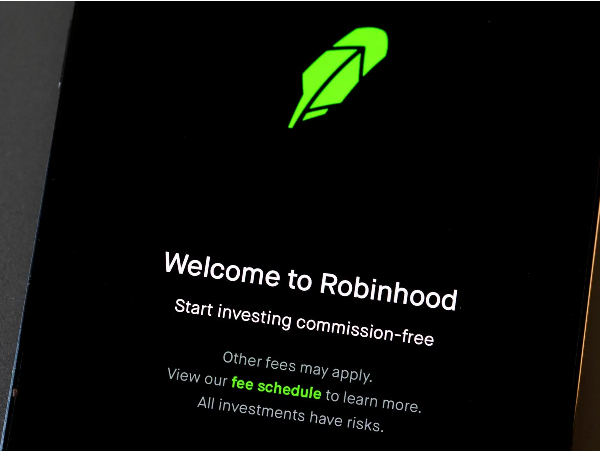
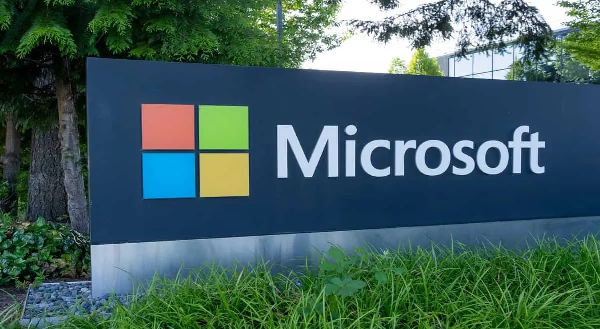

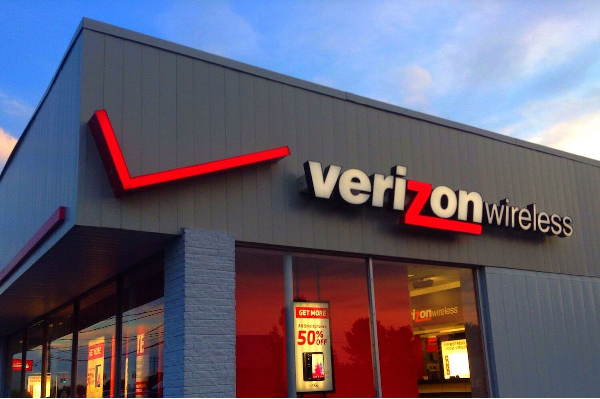

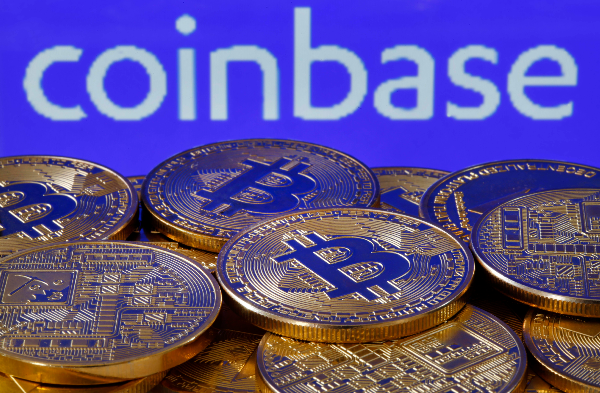
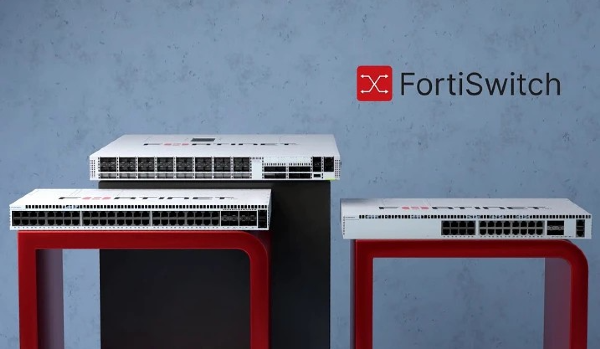

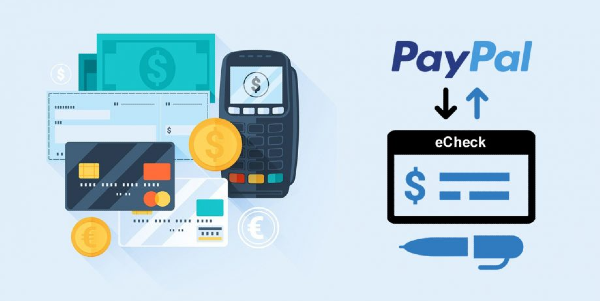









Key Takeaways
The Top Building and Construction ETFs are listed below in order of Best ETF option.
Intro to Building and Construction ETFs
The construction industry is essential for economic growth, shaping homes, businesses, and infrastructure. Investing in construction ETFs is a smart way to benefit from the industry's success without picking individual stocks. These funds group multiple construction companies, offering diversification and reducing risk. With easy access, expert management, and exposure to key industry players, construction ETFs make investing simpler and more efficient.
Understanding Construction ETFs
Construction ETFs are exchange-traded funds that invest in companies involved in building and development. These funds pool investor money to create a diversified portfolio of construction-related stocks, reducing risk compared to investing in individual companies. Unlike mutual funds, ETFs trade on stock exchanges like regular shares, offering liquidity and flexibility. Their structure allows investors to gain exposure to the construction sector while benefiting from professional management and cost efficiency.
Construction ETFs differ from broader infrastructure or real estate ETFs in their focus. While infrastructure ETFs invest in companies involved in transportation, utilities, and public works, construction ETFs concentrate on firms that manufacture building materials, provide construction services, or develop residential and commercial properties. Real estate ETFs, on the other hand, primarily hold real estate investment trusts (REITs) that generate income from property ownership rather than construction activity.
Criteria for Selecting Top Construction ETFs
When selecting a top construction ETF, investors should consider expense ratios and fund costs. Lower expense ratios mean fewer fees, allowing more of the investment to grow over time. Many construction ETFs have expense ratios averaging around 0.50%, but some funds offer lower costs, making them more attractive for long-term investors. Additionally, understanding the fund's management fees and trading costs can help investors maximize returns.
Holdings composition is another key factor. The best construction ETFs include a mix of major construction firms, materials suppliers, and engineering companies. Some funds focus on homebuilders, while others invest in broader infrastructure development. For example, the iShares U.S. Engineering and Construction ETF (IYG) provides exposure to companies involved in heavy construction and building materials. Investors should review the fund's holdings to ensure alignment with their investment goals.
Liquidity and assets under management (AUM) also impact ETF performance. Higher AUM indicates strong investor interest and stability, while liquidity ensures easy buying and selling of shares. Historical performance and volatility considerations help investors assess risk, as construction ETFs can fluctuate based on economic cycles and government infrastructure spending. Additionally, dividend yield and income potential are important for those seeking passive income, with some ETFs offering competitive yields.
The Best Building and Construction ETFs for Investors
Investing in building and construction ETFs provides diversified exposure to companies driving infrastructure growth, homebuilding, and materials production. Top funds like the iShares U.S. Infrastructure ETF (IFRA), Invesco Dynamic Building & Construction ETF (PKB), and SPDR S&P Homebuilders ETF (XHB) offer targeted strategies for different segments of the sector. These ETFs balance risk and reward through diversified holdings, low expense ratios, and strong historical performance. With ongoing infrastructure investment and rising construction demand, selecting the right ETF can help investors capitalize on long-term industry trends.
iShares U.S. Infrastructure ETF (IFRA)
The iShares U.S. Infrastructure ETF (IFRA) provides investors with exposure to U.S. companies involved in infrastructure development, including utilities, construction firms, and materials suppliers. The fund tracks the NYSE® FactSet U.S. Infrastructure Index, which consists of equities that benefit from domestic infrastructure growth. IFRA is designed to capture both owners and operators of infrastructure assets, such as railroads and utilities, as well as enablers like construction and materials companies.
With an expense ratio of 0.30%, IFRA offers a cost-effective way to invest in infrastructure-related stocks. The ETF has demonstrated strong liquidity, with significant assets under management and a diversified portfolio. Historical performance indicates steady growth, with a one-year return of 6.16% and a five-year return of 19.72%. Investors should consider market cycles and macroeconomic factors, such as government spending and interest rates, which can impact the fund’s performance.
IFRA presents both advantages and risks for investors. Its diversified holdings reduce exposure to individual stock volatility, making it a stable option for long-term infrastructure investment. However, the fund’s performance is closely tied to economic policies and infrastructure funding, which can introduce uncertainty. Additionally, while IFRA provides broad exposure, it may not capture niche opportunities in specialized infrastructure sectors.
Product Information: iShares U.S. Infrastructure ETF Overview
Invesco Dynamic Building & Construction ETF (PKB)
The Invesco Dynamic Building & Construction ETF (PKB) is designed to provide exposure to U.S. companies involved in construction and engineering services. The fund tracks the Dynamic Building & Construction Intellidex℠ Index, which evaluates stocks based on price momentum, earnings growth, management actions, and overall value. PKB invests at least 90% of its assets in companies engaged in residential, commercial, and industrial construction, as well as infrastructure projects like highways, bridges, and airports.
PKB's portfolio consists of 30 holdings, with top allocations including EMCOR Group (EME), Martin Marietta Materials (MLM), and Trane Technologies (TT). Other significant holdings include Vulcan Materials (VMC), Johnson Controls (JCI), and Lowe’s (LOW), reflecting a mix of construction services, materials suppliers, and infrastructure-related firms. This diversified sector allocation allows investors to gain exposure to multiple aspects of the construction industry, balancing cyclical risks with long-term growth opportunities.
The ETF has a total expense ratio of 0.57%, making it a moderately priced option for sector-focused investing. PKB has demonstrated strong historical performance, with a five-year return of 25.45% and a three-year return of 16.67%. However, its volatility is influenced by macroeconomic factors such as interest rates and government infrastructure spending. Investors should consider these dynamics when evaluating PKB’s suitability for their portfolios.
Product information: Invesco Building & Construction ETF Overview
SPDR S&P Homebuilders ETF (XHB)
The SPDR S&P Homebuilders ETF (XHB) provides investors with exposure to companies involved in residential construction, homebuilding, and related industries. The fund tracks the S&P Homebuilders Select Industry Index, which includes firms engaged in home construction, building materials, and home improvement retail. XHB offers a diversified approach by including not only homebuilders but also suppliers and service providers that support the housing market.
XHB's top holdings feature a mix of home construction firms and related businesses, including PulteGroup (PHM), D.R. Horton (DHI), Lennar Corporation (LEN), and Lowe’s (LOW). The ETF also includes companies like Owens Corning (OC) and Trane Technologies (TT), which provide essential building materials and climate control solutions. Industry trends such as rising housing demand, supply chain improvements, and government incentives for affordable housing continue to shape the ETF’s performance.
Historically, XHB has demonstrated strong growth, with a five-year return of 174.92% and a one-year return of 6.18% The fund’s expense ratio of 0.35% makes it a cost-effective option for investors seeking exposure to the homebuilding sector. However, its performance is sensitive to macroeconomic factors such as interest rates, mortgage demand, and housing market cycles. Investors should consider these dynamics when evaluating XHB’s potential for long-term portfolio growth.
Product Information: SPDR S&P Homebuilders ETF Overview
Global X U.S. Infrastructure Development ETF (PAVE)
The Global X U.S. Infrastructure Development ETF (PAVE) focuses on companies that benefit from increased infrastructure investment in the United States. The fund tracks the Indxx U.S. Infrastructure Development Index, which includes firms involved in raw materials production, heavy equipment manufacturing, engineering, and construction. PAVE’s strategy aligns with broader construction sector trends, as infrastructure development drives demand for building materials, transportation networks, and industrial projects - Global X ETFs](https://www.globalxetfs.com/funds/pave).
PAVE’s holdings span multiple industries, including construction, materials, and industrial equipment. Major allocations include Howmet Aerospace (HWM), Fastenal Co. (FAST), Deere & Co. (DE), and CRH PLC, reflecting a mix of engineering, manufacturing, and materials suppliers. This diversified sector exposure allows investors to capitalize on infrastructure spending while mitigating risks associated with individual companies. The ETF’s broad approach ensures it captures growth across various infrastructure-related industries.
With an expense ratio of 0.47%, PAVE offers a cost-effective way to invest in infrastructure development. The fund has demonstrated strong long-term performance, with a five-year return of 25.73% and a three-year return of 10.88%. However, its performance is influenced by macroeconomic factors such as government infrastructure policies and interest rate fluctuations. Investors seeking exposure to infrastructure growth should consider PAVE’s diversified holdings and historical stability when evaluating its suitability for their portfolios.
Product Information: Global X U.S. Infrastructure Development ETF Overview
Conclusion
Investing in building and construction ETFs offers a strategic way to gain exposure to infrastructure development, homebuilding, and materials production. Top ETFs like IFRA, PKB, XHB, and PAVE provide diversified holdings, strong historical performance, and industry-specific investment opportunities. While expense ratios, macroeconomic trends, and market cycles play a crucial role in ETF selection, these funds offer long-term growth potential amid rising infrastructure spending and housing demand. By carefully evaluating each ETF’s holdings and investment strategy, investors can position themselves to benefit from the evolving construction sector.